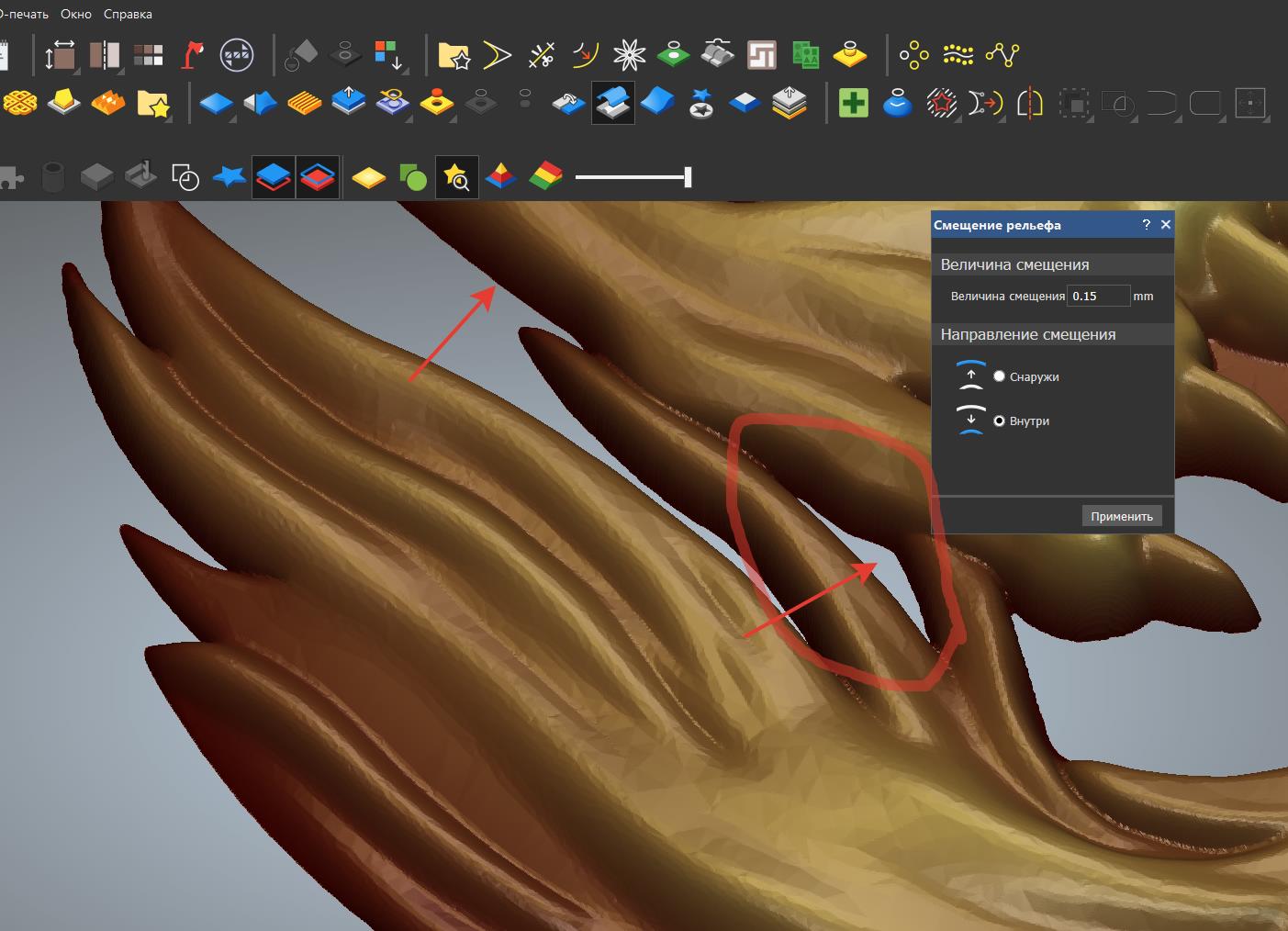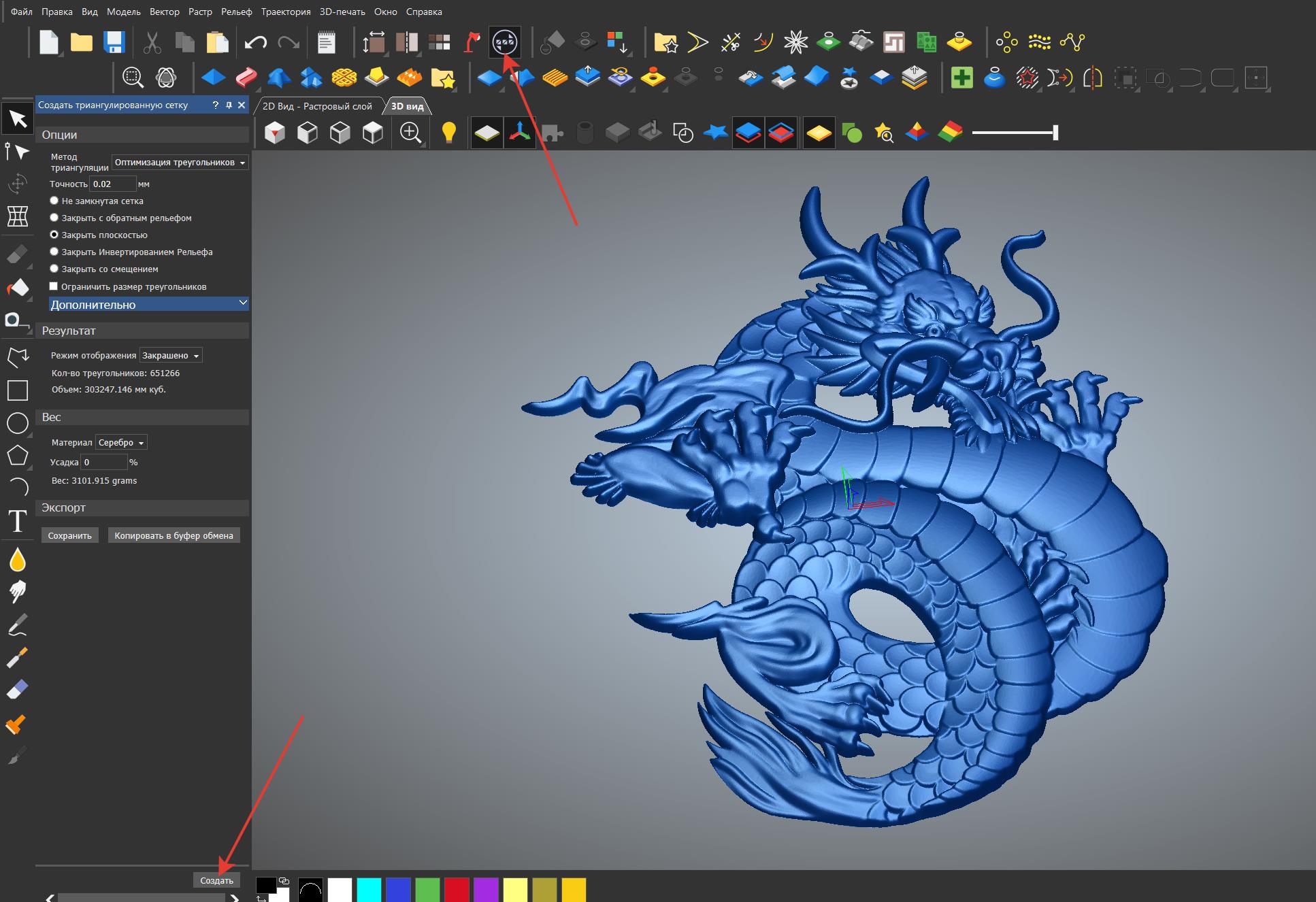Article views: 1033
ArtCAM Tutorials - fixing STL file errors
In this tutorial, we'll look at fixing STL file errors in ArtCAM.
We will not consider why errors occur in STL files, this is not the topic of this lesson. We will use ready-made files with possible errors. Unfortunately, or fortunately, there are not many such files in my collection, since most of the STL are processed manually and errors are corrected before being published on the site. Therefore, I deliberately took one file and introduced into it in advance those errors that I observed in the process of editing the STL. And also consider methods for correcting and correcting STL files.
(Introducing errors into files was a pain in the ass... Therefore, some of the errors may look too artificial).
The most common mistake when importing STL into ArtCAM
The most common mistake when importing STL files to ArtCAM is blurry borders of model relief edges. Let's look at an example. For greater clarity, this STL file was converted into an STL model in the program (more details will be below in the text).
Let's create a new model in the program (for example, I created a new model 400 x 400) and import the STL file there:
- Relief - Import - Import 3D model (in the picture, the file has already been converted in the program for greater clarity):

Let's zoom in on the resulting model and look at the blurring of the edges of the relief (don't forget, the error is artificial, so it looks fairly even, in real models the border may look unpredictable with torn edges, and so on...)

Consider several methods for fixing this error:
- If this error is known in advance, you can get rid of it already in the process of importing the model into the program. To do this, it is enough to specify the position of the model along the Z axis during import (presumably) - 0.1 or -0.5 mm.

- Click "Apply" and see the result. To remove an unnecessary contour during the editing process, I brought the indicators to -0.4.

- I deliberately left a little "loose edges" and did not correct the error completely ...
- Inserting the model...
- Turn on-off the display of the reverse relief (or enable the display of only the relief layer) and see how many errors are left on the model BUT! by lowering the model by another 0.1 mm, you can get rid of the relief perimeter error altogether:

Let's fix these errors (as I wrote above, I left this as an example for further work on fixing). We will use the standard tools of the program. Let's consider one of the ways.
Fixing model edges by creating a vector border
Let's create a vector border of the model's relie:
- Vector — Create — Relief Boundaries.
- An additional menu appears. We put a tick on the additional range of heights (That is, we will force the Vector to pass not along the bottom of the terrain, but a little higher). We prescribe 0.1-0.2 - this will be enough:
Now the boundaries of the relief passes exactly according to our model. If this doesn't work for you, delete all vectors, change the height, and repeat the operation. (To remove the old Vector, simply press CTRL + A on the keyboard, then DEL).
- Now select a Vector that goes outside the model. Next, select the tool "Zero Outside Vector" and set it to zero, that is, remove everything unnecessary outside.
Getting it:

If the vectors are inside the model, then use the tool "Zero inside the vector».
Before that, remember to choose the right vectors:

If something went wrong, or you deleted what you need, you can always undo it - press CTRL + Z on the keyboard (hot keys are very helpful in your work). We repeat the operation with vectors until you are satisfied with the result.
We have considered one of the ways to fix this error, consider another way.
Editing the relief by raising or lowering it
On this model, I will undo all changes. And I will turn on the display of only the relief layer so that the substrate does not interfere with usа:

Naturally, the artifacts of the external relief are perfectly visible. The method applied in this fix will refer to changing the position of the terrain above or below the ground surface.
The method is quite energy-consuming for processing in the program, large and high-polygonal (complex) models can cause the program to hang. But if you have a fairly modern computer, this should not be a problem. We will use the terrain displacement tool:
Here we will use the “lowering” (put a tick on “inside”) of the relief by 0.1-0.2 mm. We apply and look at the result:
Pay attention to the fact that even small internal forms have received their outlines. Of course, in this case, we lost zero 0.1-0.2 mm of relief, but in most cases this is not significant. For better visualization of the correction of artifacts on the model, we will convert it into an STL file using the built-in tool for creating a triangulation mesh:
Thus, we have corrected the current artifacts around the perimeter of the model. Then you can save the model, or use it in your current project.
Addendum to the article (2 days after publication):
Who does not understand and believes that errors in the relief perimeter (similar to those in the example) do not particularly affect the model itself - Yes, indeed, you may not notice this visually, but when calculating the NC for Mach3 or another CNC program, all this will “fall out” in complicating the trajectory and increasing the processing time already on the machine. It has been verified more than once, since ArtCAM processes all surface irregularities, which means it adds extra triangles. And the more irregularities around the perimeter, even if they are only 0.05 mm, the more triangles there will be.
The lessons are aimed at beginners to work in the ArtCAM program, so do not judge the "Guru" strictly. I try to use simple and accessible explanations specifically for a novice audience.
Own experience in working in the program - more than 700 hours.







